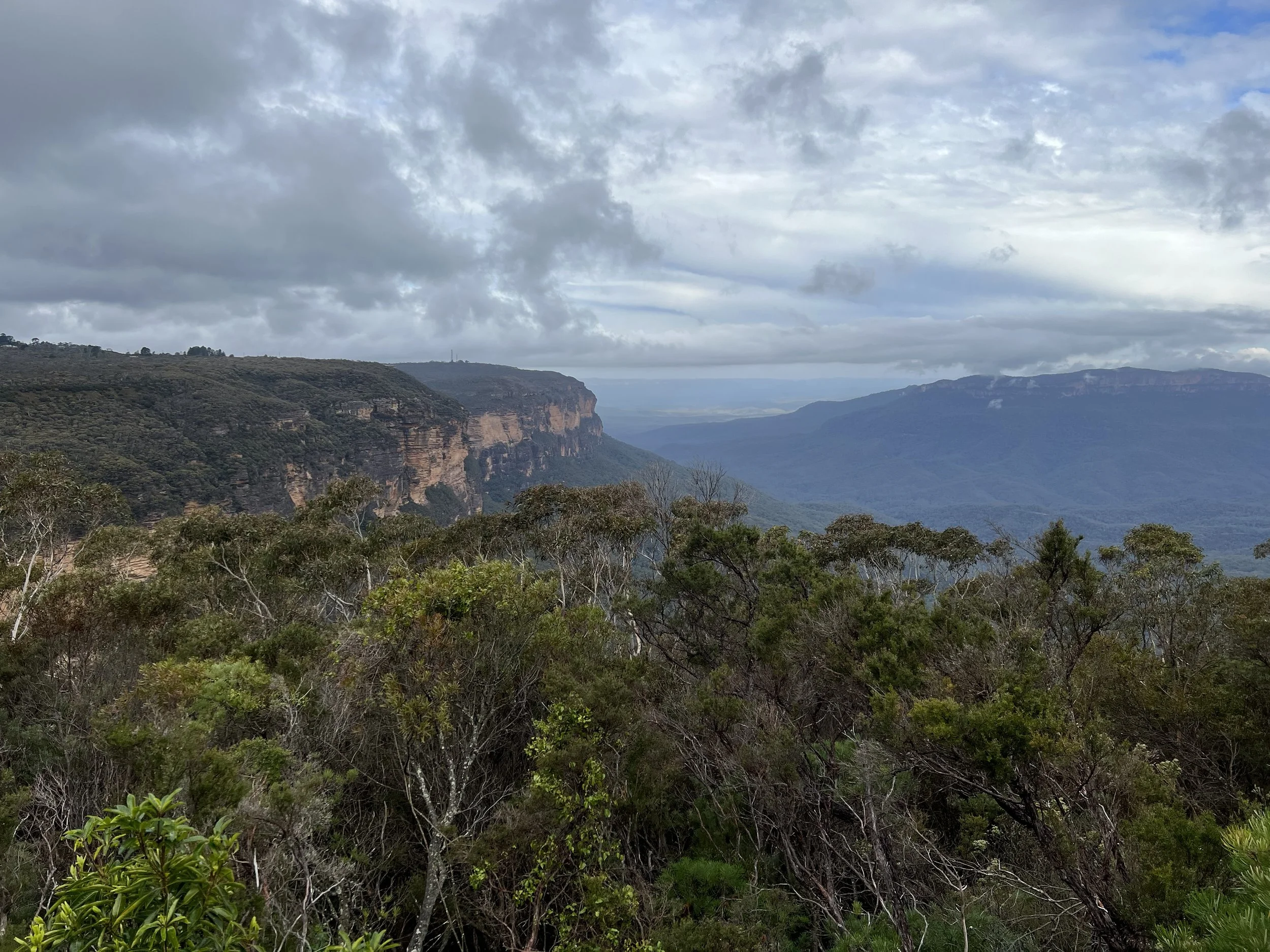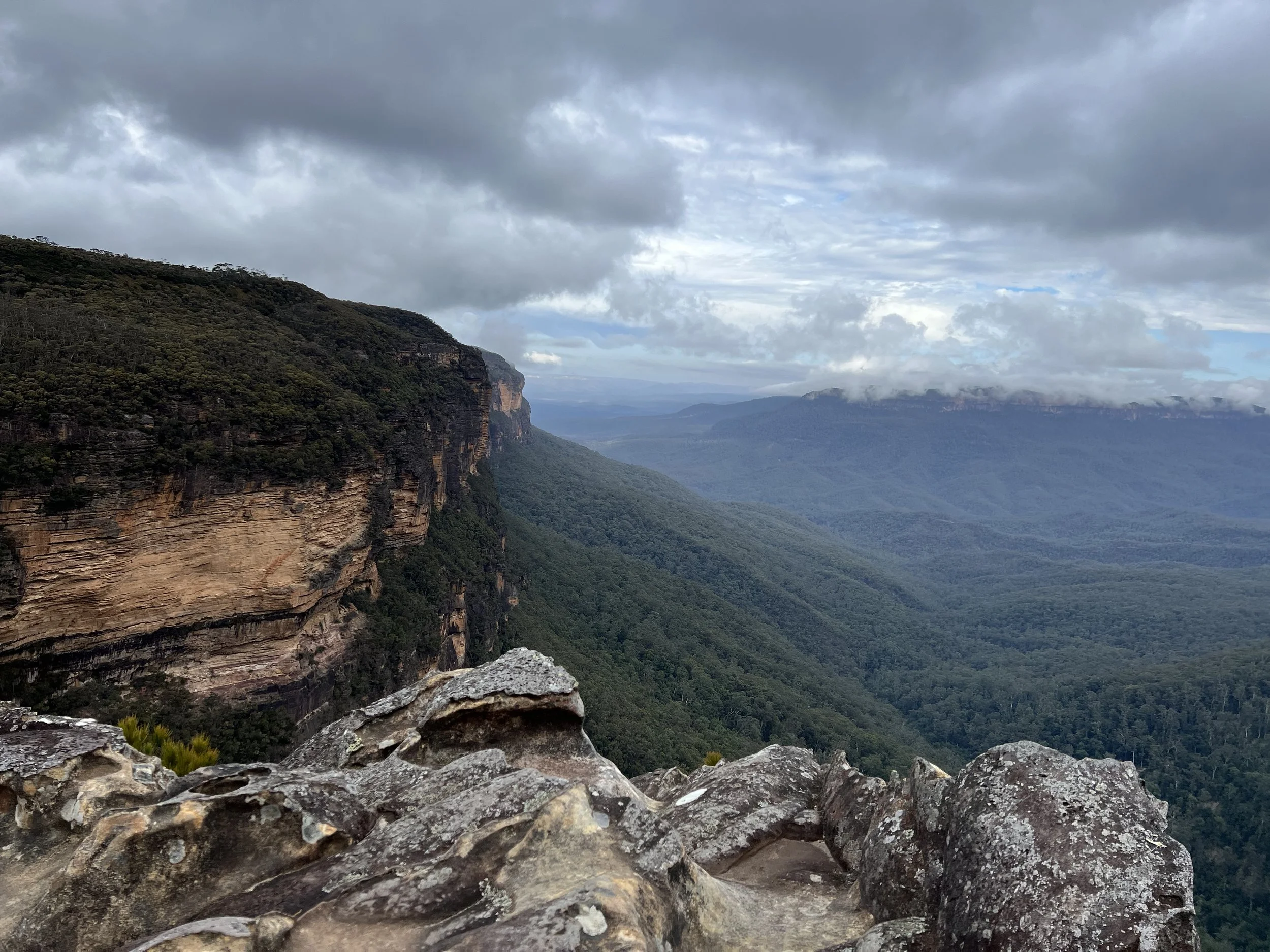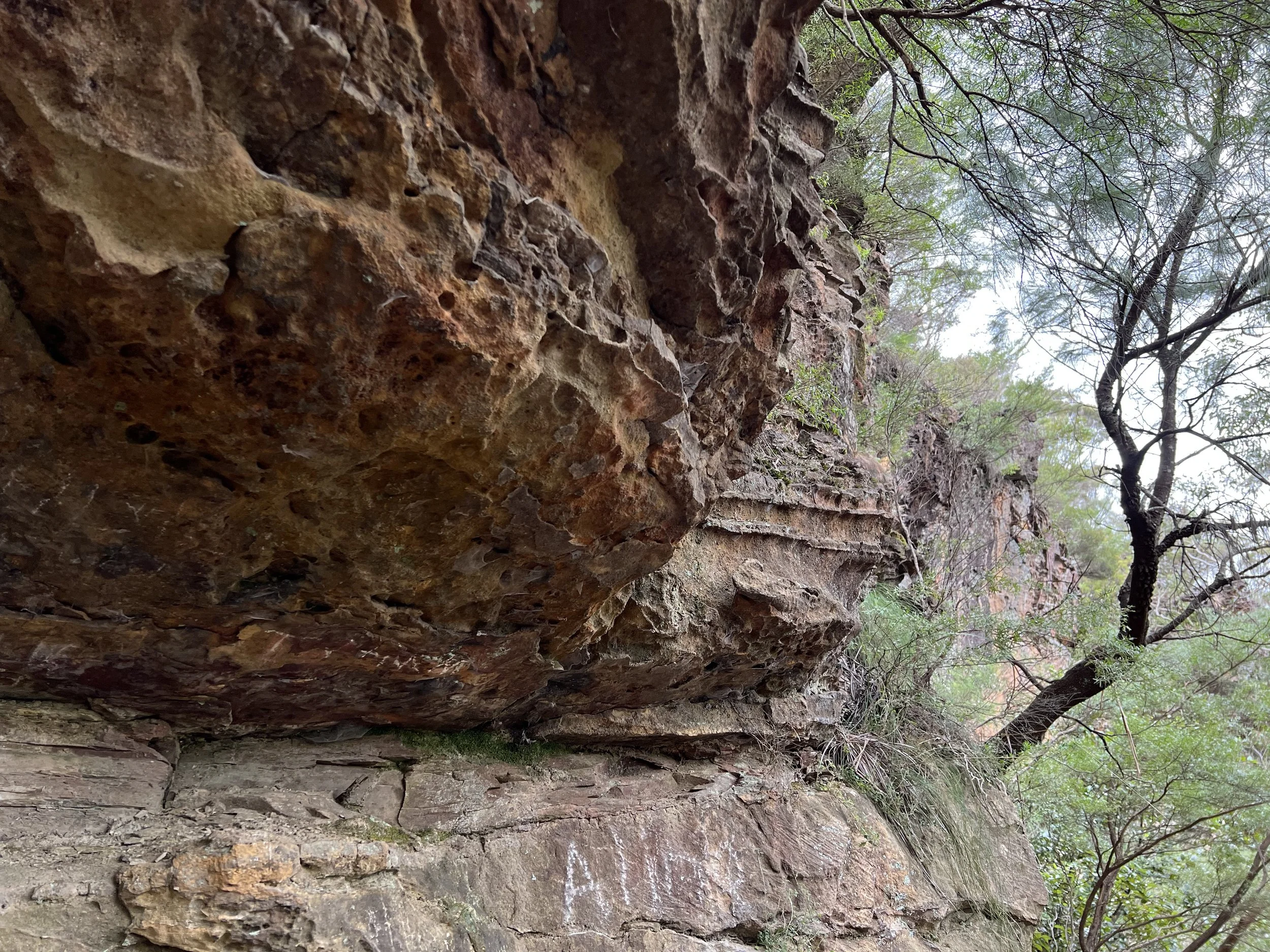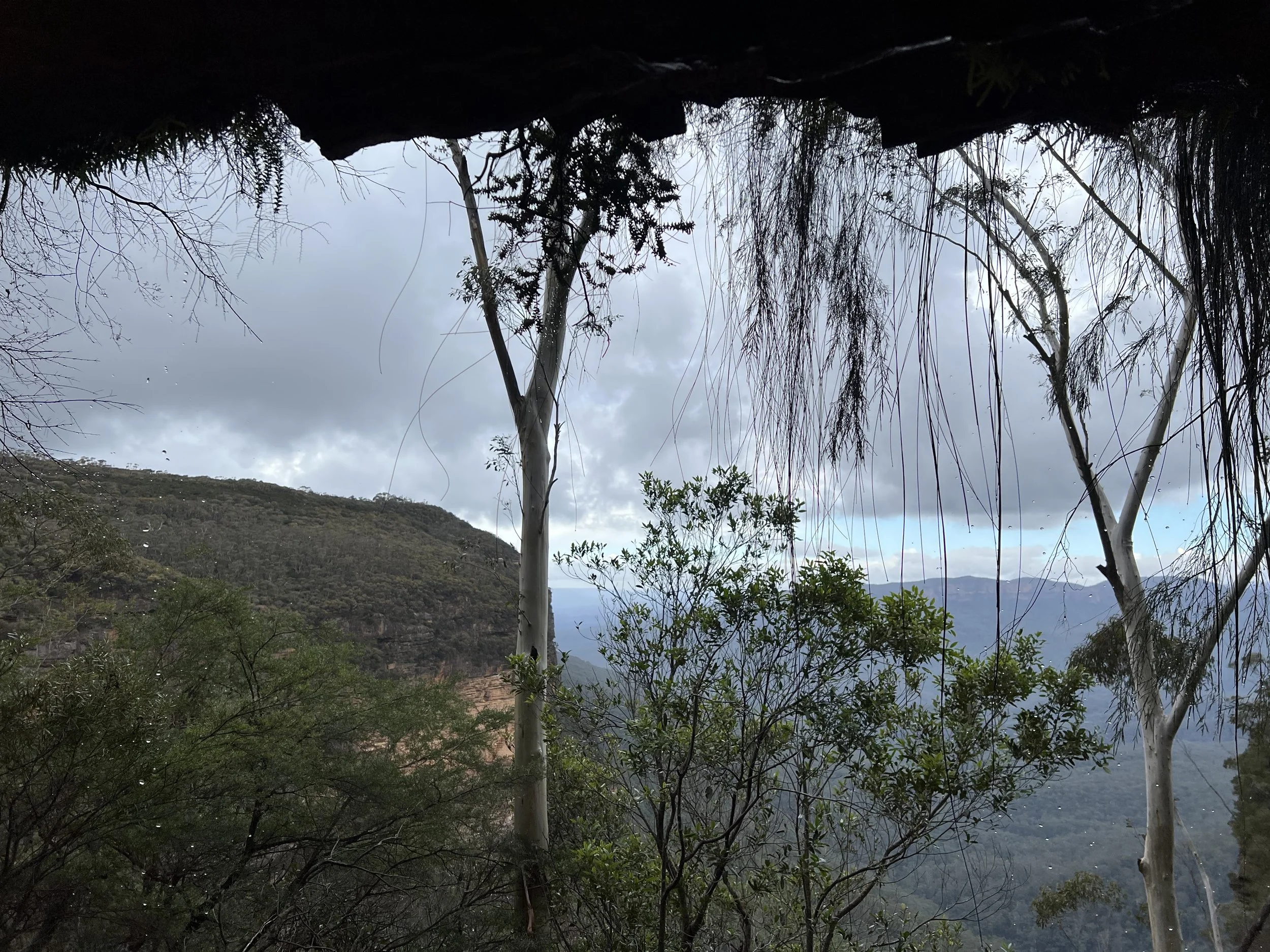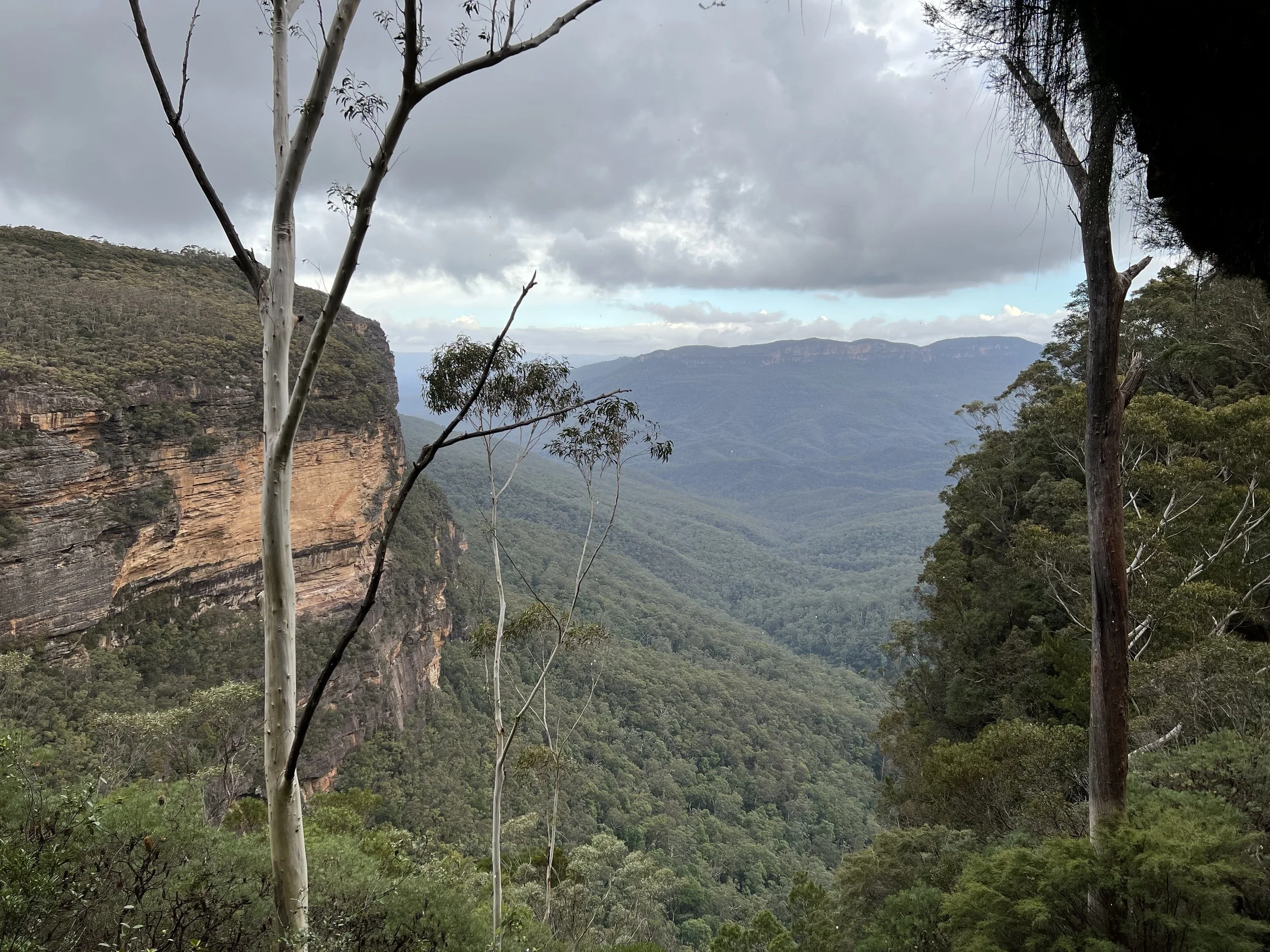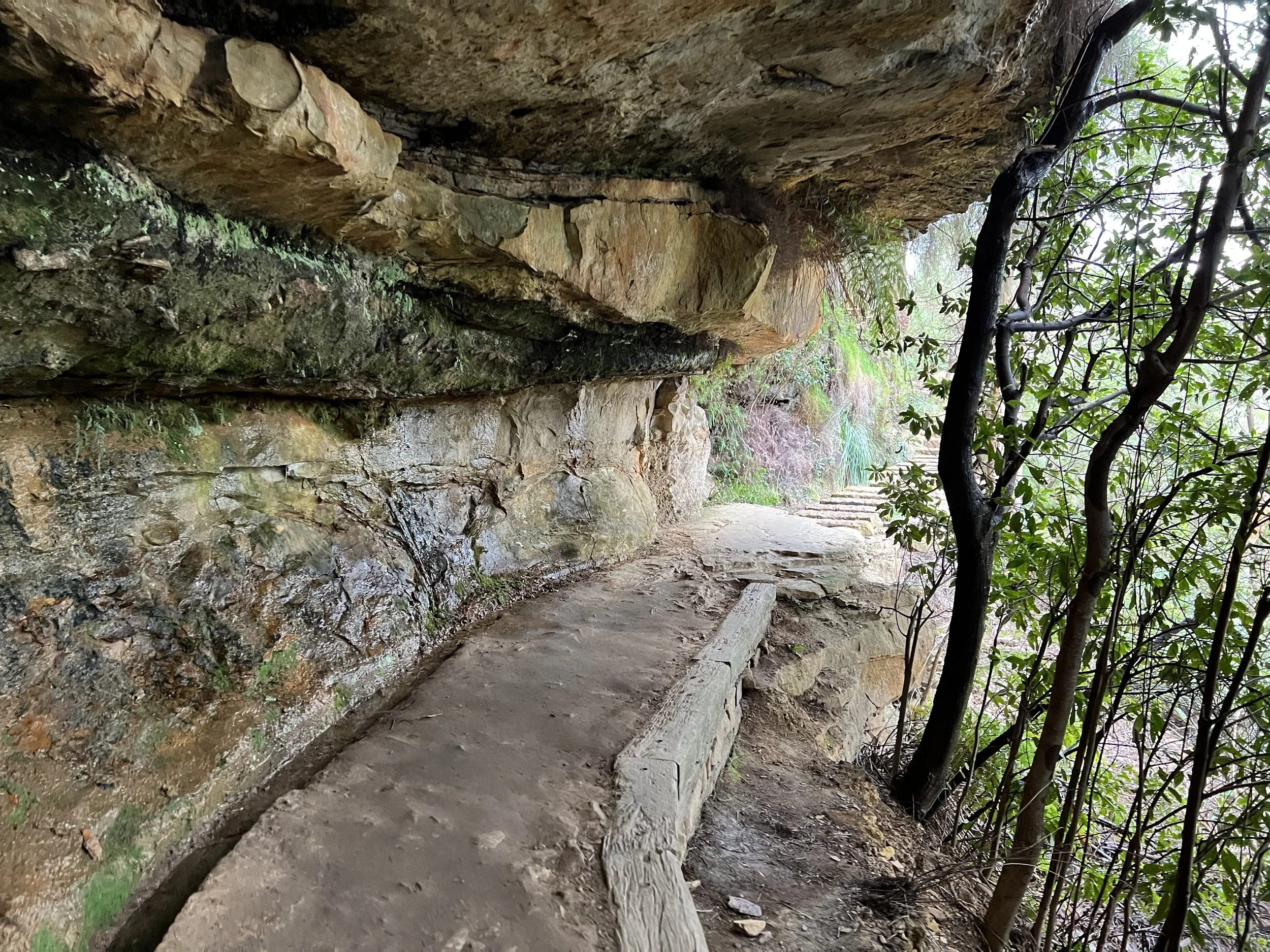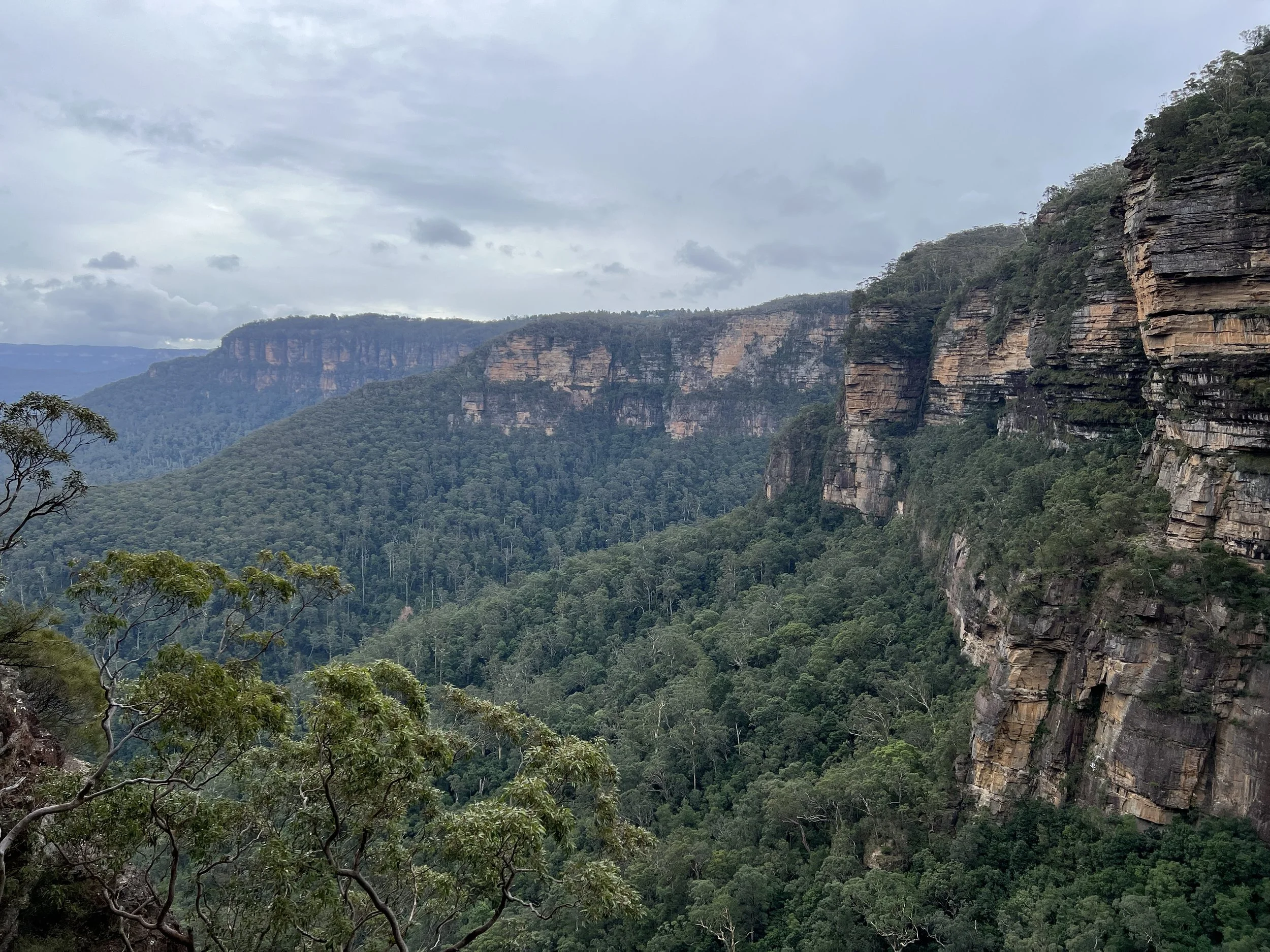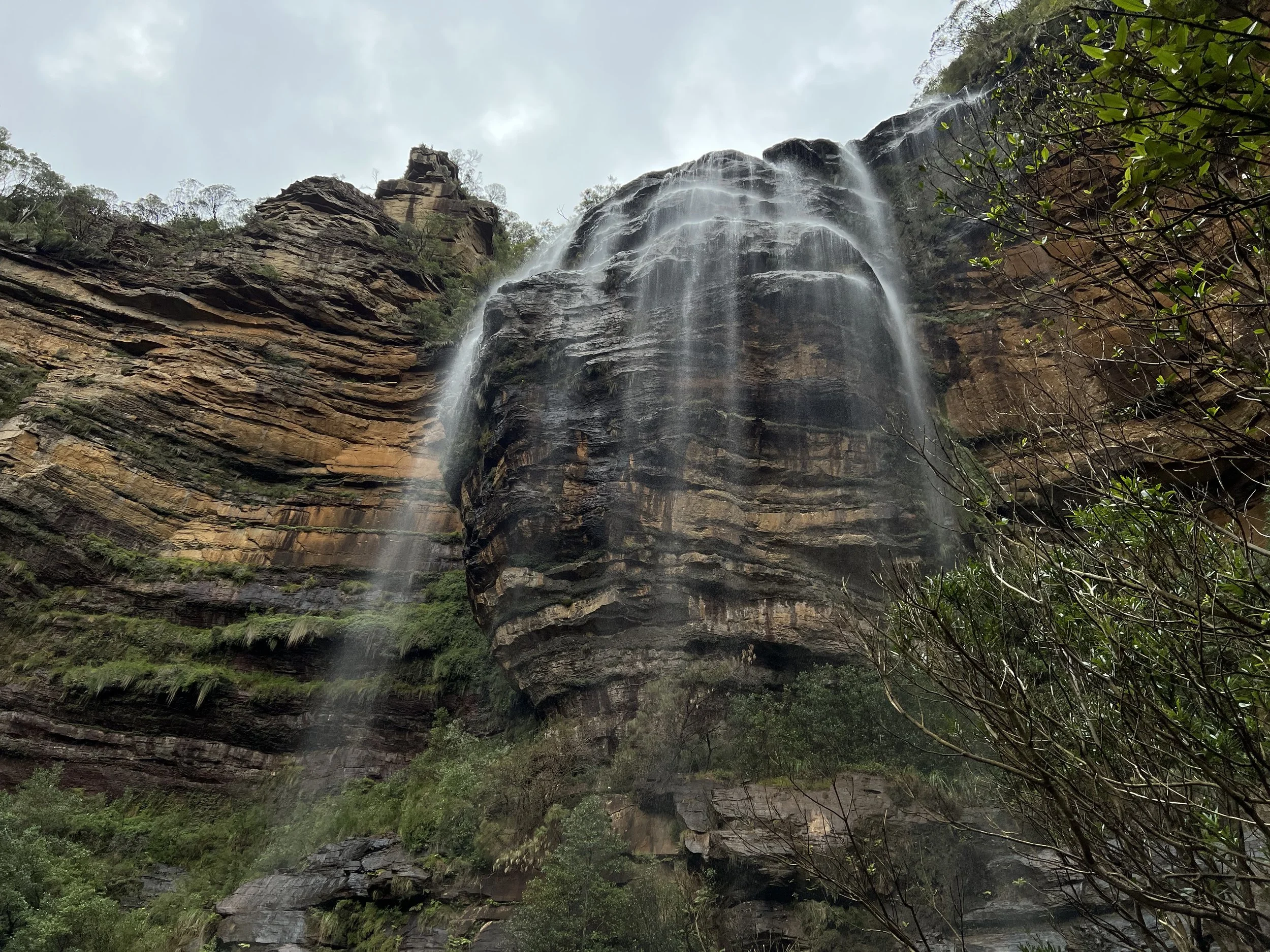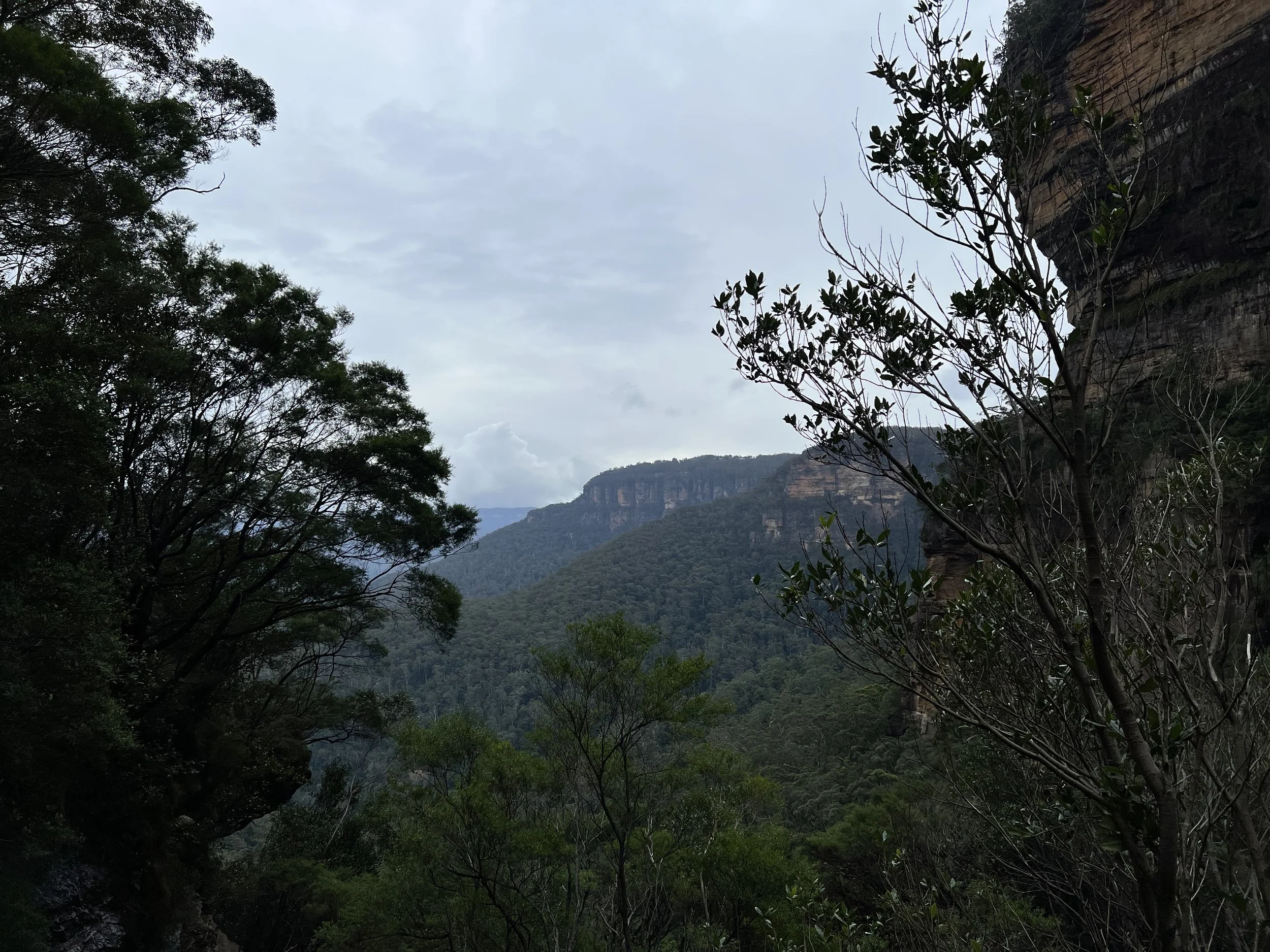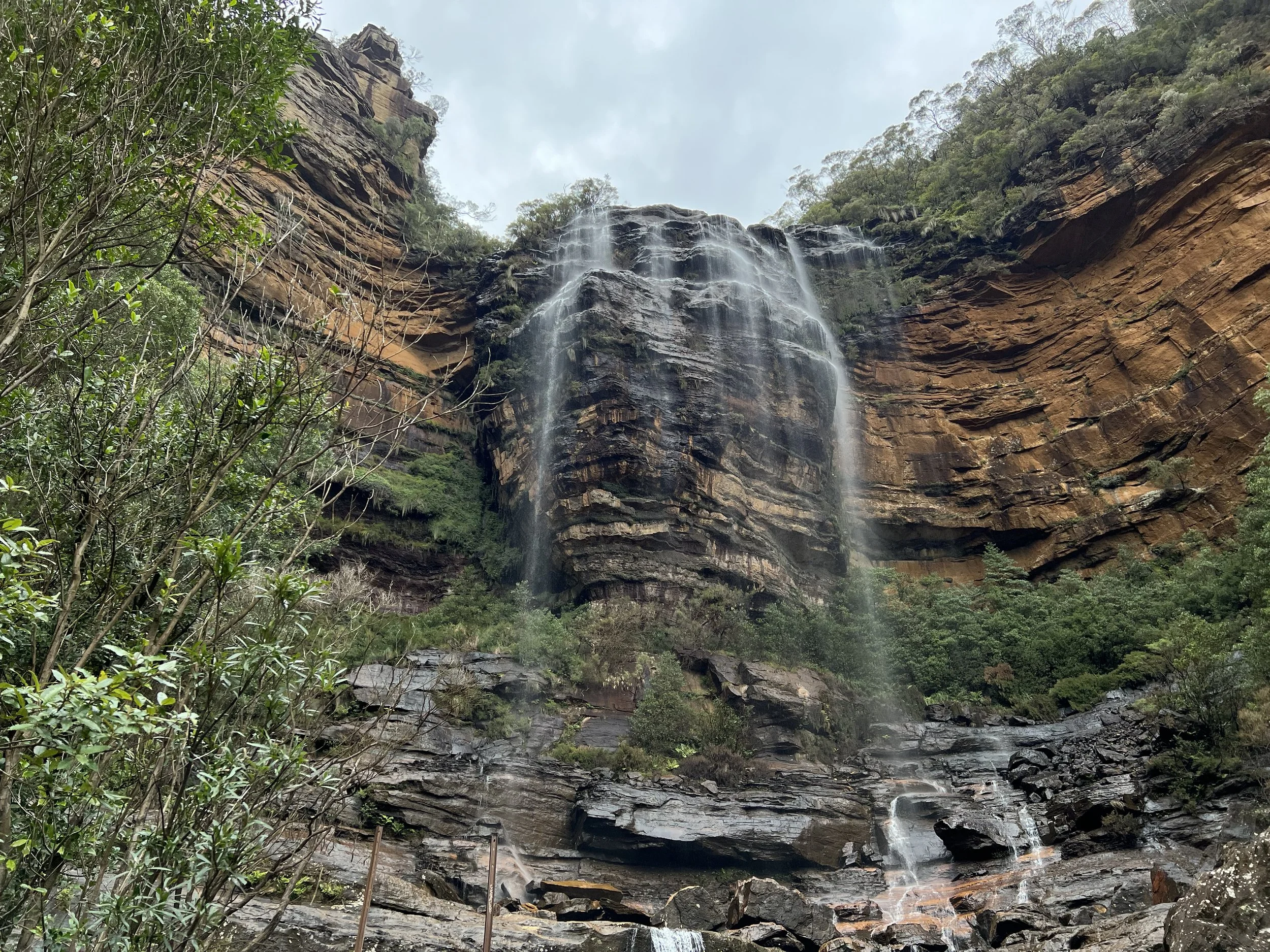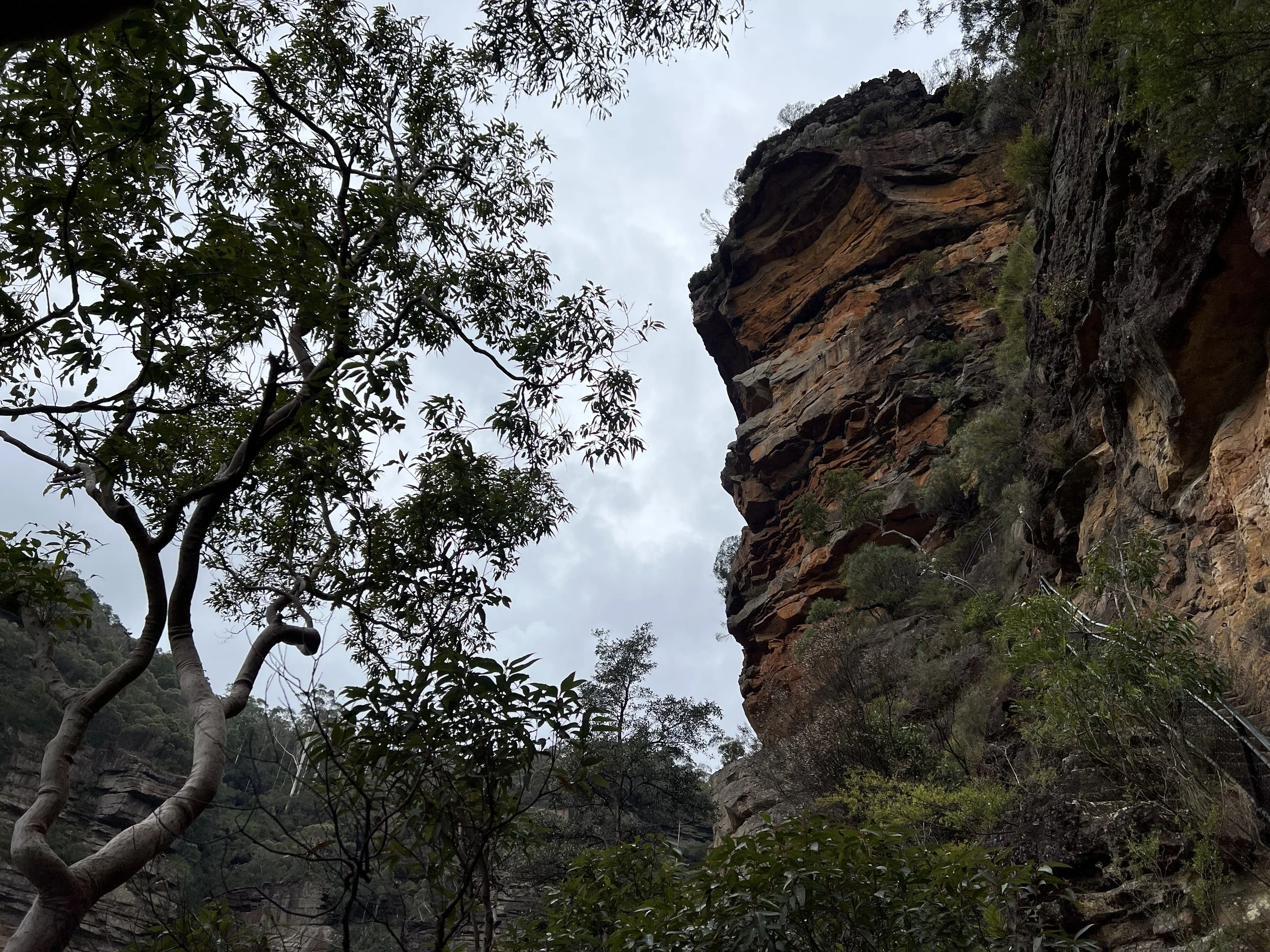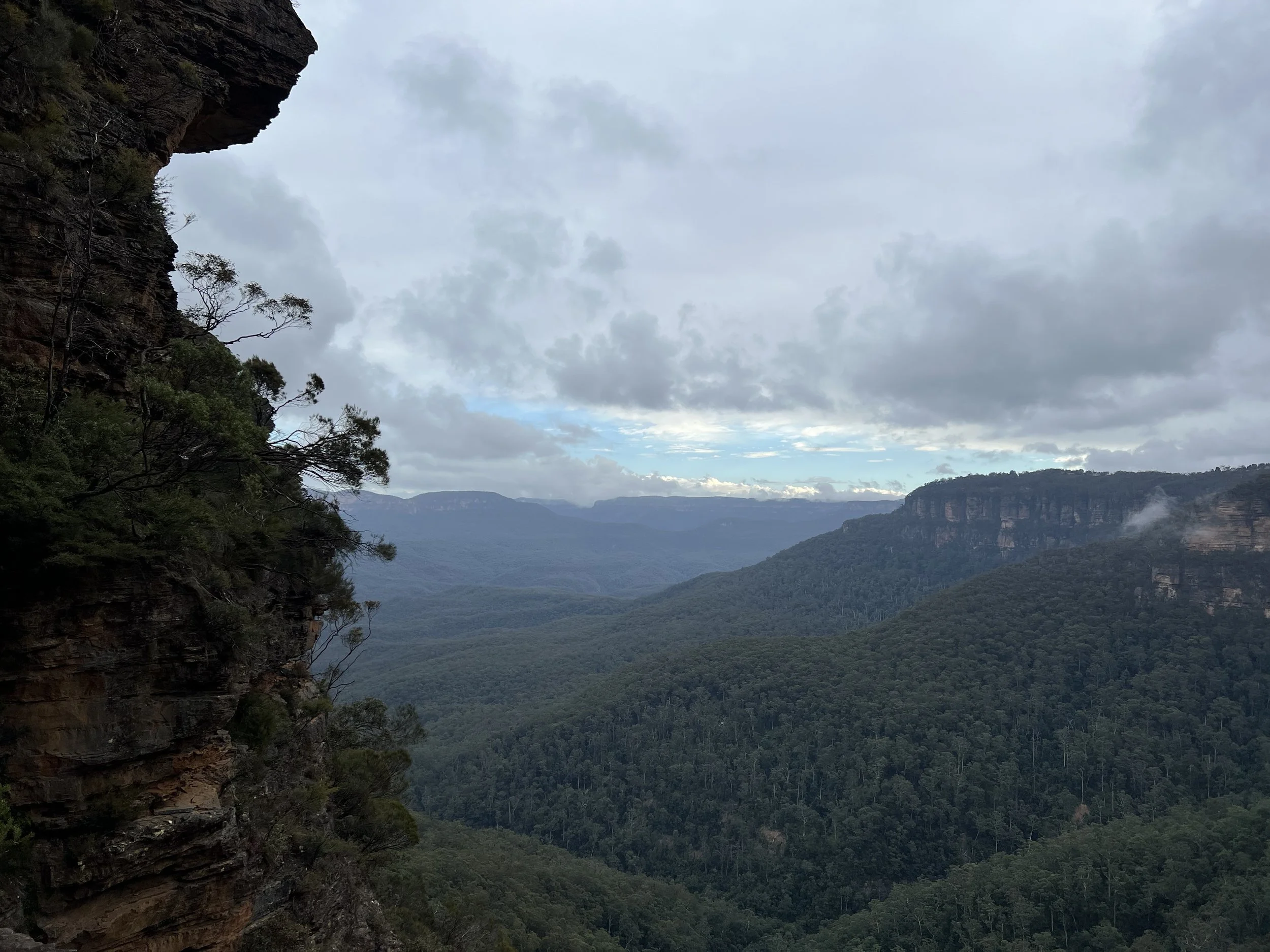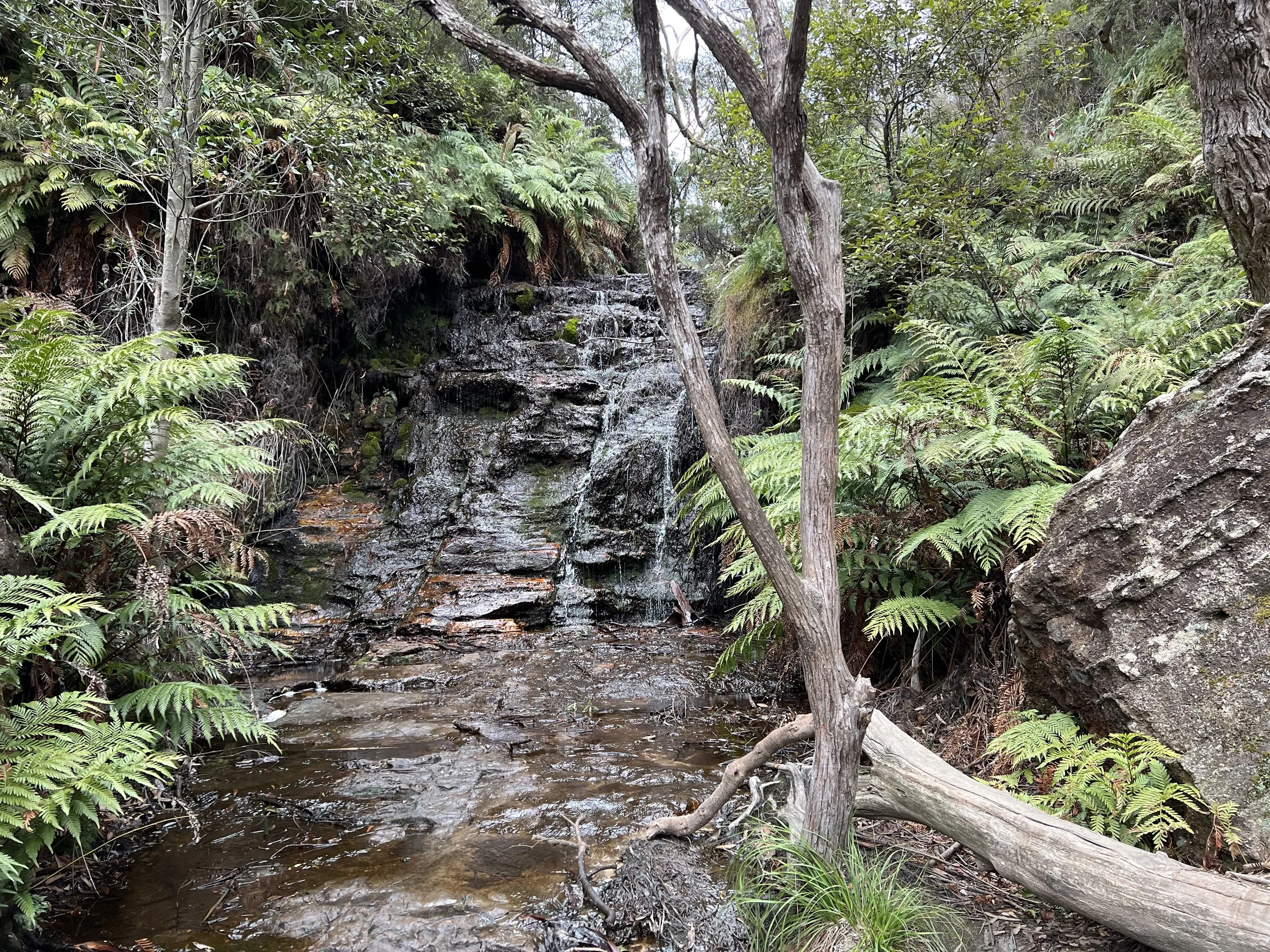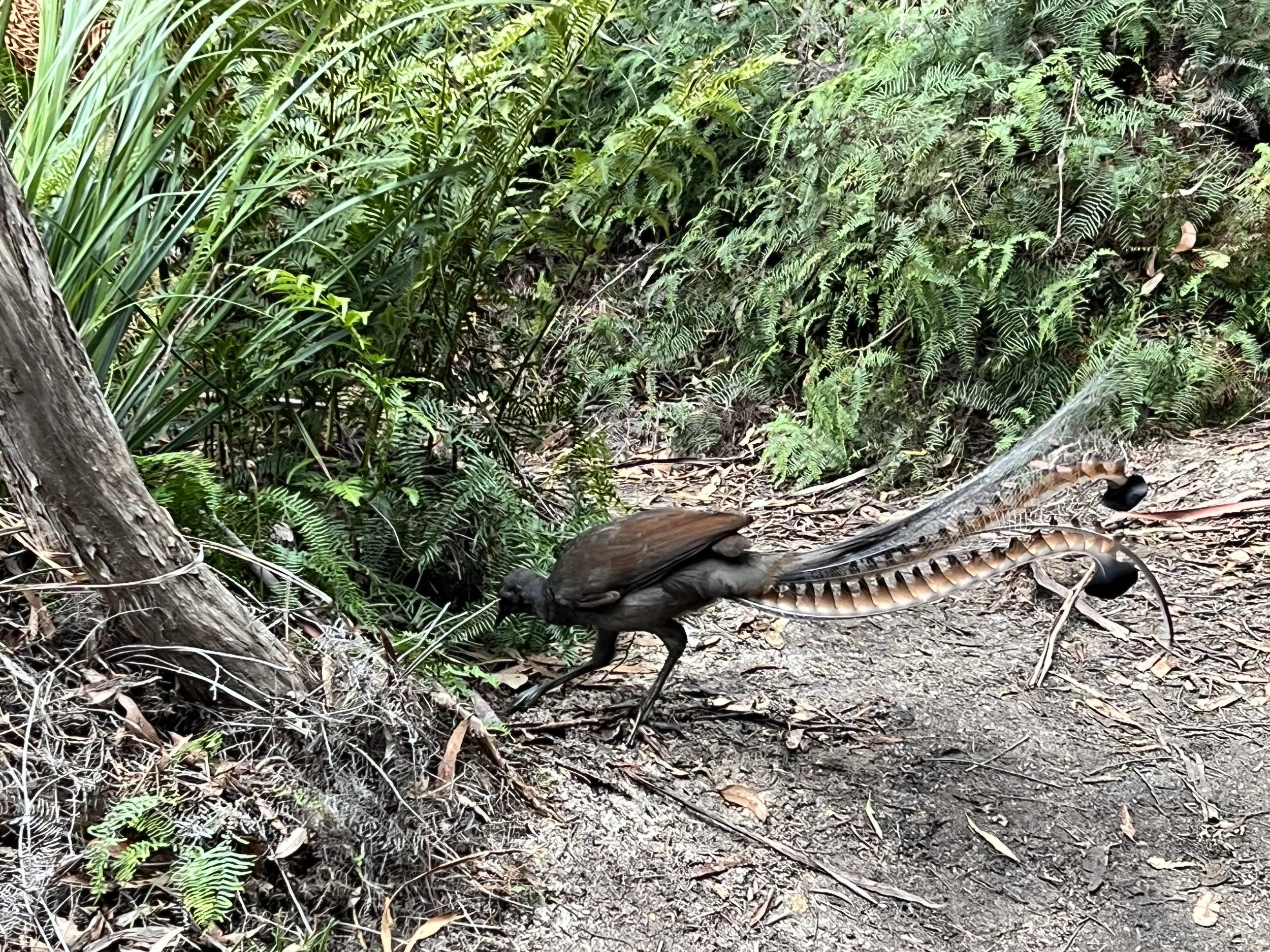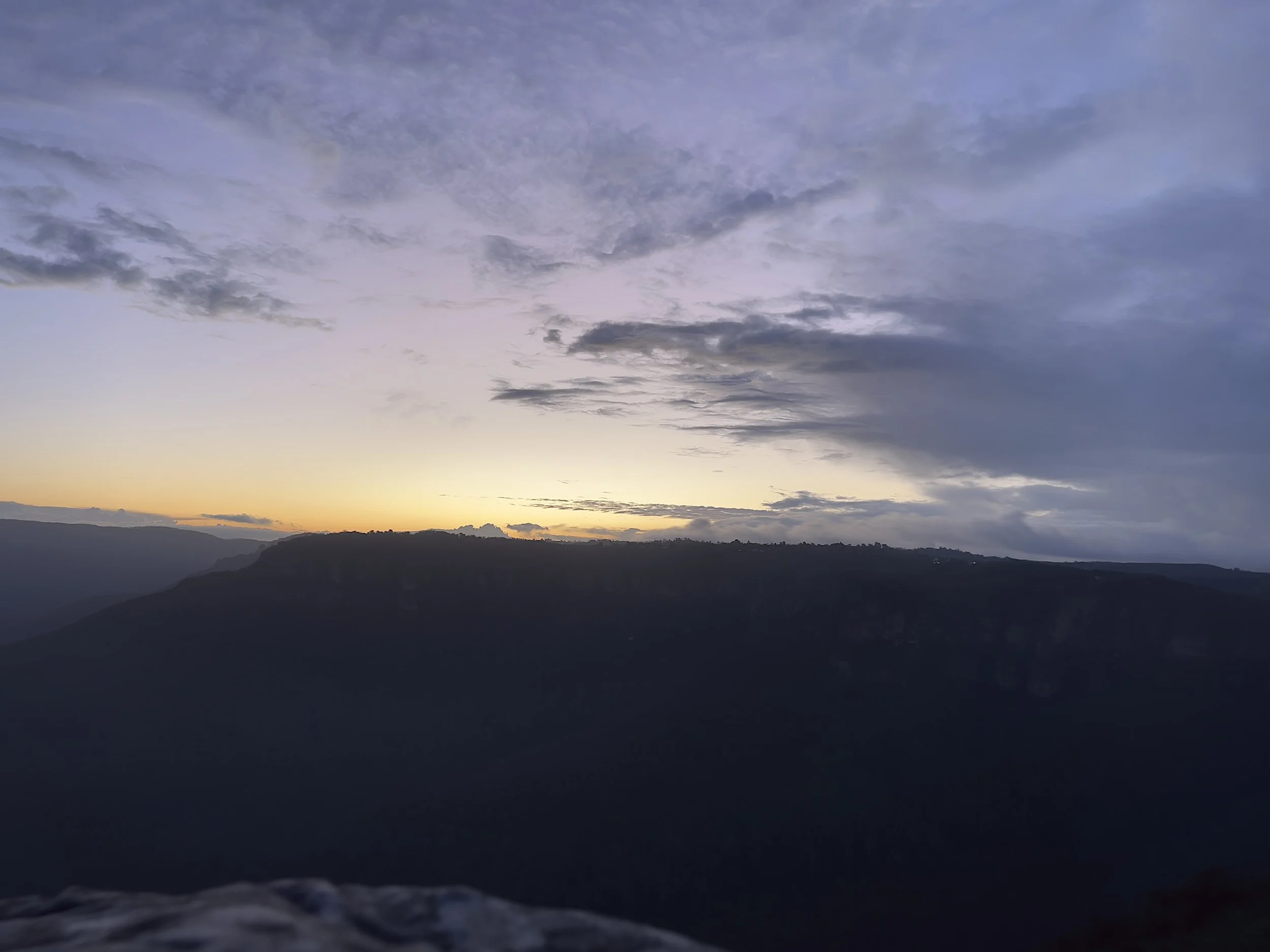Blue Mountains - New South Wales, Australia
Blue Mountains in New South Wales has long captured my imagination with its ancient sandstone cliffs, deep valleys, and the soft blue haze that gives the region its name. The area has been home to Aboriginal peoples—including the Gundungurra and Darug—for tens of thousands of years, and that deep sense of history is something you can feel the moment you arrive. I had seen photos of the dramatic plateaus and sheer escarpments before my trip, and I knew I wanted to experience it for myself. I looked into public transportation but discovered the train wasn’t running during my visit. Renting a car was an option, but the prices didn’t justify the hassle of navigating unfamiliar mountain roads. A small-group tour ended up being the perfect compromise—stress-free, affordable, and still allowing me to visit the highlights I had on my list.
On the day of the sunset tour, I was picked up in Sydney’s CBD. There were only seven of us, which made the experience much more intimate. Because it was an afternoon departure, traffic heading out of the city wasn’t too bad, and within about an hour we reached our first stop: the Wentworth Falls area. This region offers a mix of family-friendly viewpoints and longer trails, so you don’t need to be a hiker to enjoy the scenery.
Our group walked the Overcliff–Undercliff Track, a trail known for its low overhangs, hanging tree roots, and a series of lookouts that open up to sweeping valley views. As we made our way along the track, our guide shared stories and history about the region. From Wentworth Falls Lookout, we enjoyed our first full view of the waterfall, then continued to Fletchers Lookout where the views of the sandstone cliffs and the plateau were even more striking. Here, the guide offered the option to continue further down the trail. Only a few of us took him up on it, and I’m glad I did—I wanted to see the falls up close. The descent was steep, but the climb back up was the true workout. Still, the photos and the perspective were well worth the effort.
After returning to the parking area, we continued on to Echo Point, home of the famous Three Sisters. The Three Sisters are an iconic rock formation tied to a well-known Aboriginal legend. According to the story, three sisters—Meehni, Wimlah, and Gunnedoo—lived in the Jamison Valley as part of the Katoomba tribe. They fell in love with three brothers from the Nepean tribe, but tribal law forbade the marriages. Determined to take the sisters by force, the brothers initiated a major conflict. To protect the sisters, a Katoomba witchdoctor turned them into stone. His plan was to reverse the spell once the danger had passed, but he was killed in the battle—leaving the sisters in their stone forms forever. Hearing this story while standing before the formation added a layer of meaning to the landscape.
The fog had been lingering all day, and we weren’t sure we’d get a clear view. But fortune was on our side—the mist lifted just enough for us to see the full silhouette of the Three Sisters. The fog that remained added a beautiful atmospheric touch. I grabbed a quick snack from a nearby café before heading back to the bus, and everyone was buzzing with excitement that the views had opened up just in time.
Our final stop of the day was Lincoln’s Rock, a wide sandstone ledge overlooking Jamison Valley. Known for its sunset views and stargazing potential, it’s a spot where the landscape truly feels endless. When we arrived, the sun was sinking behind the ranges, painting the sky in soft pinks, purples, and oranges. Sitting near the edge—carefully, as there are no railings—I took in the sweeping valley and felt that familiar sense of awe that only nature can inspire. It was a peaceful, reflective way to end the day.
As we drove back toward Sydney, the skies finally opened and it began to pour. I was grateful the weather had held off until then. It felt like the perfect finale to a beautiful day in the mountains.
History & Background
Blue Mountain, often referred to as the Blue Mountains, is a UNESCO World Heritage–listed region west of Sydney, known for its rugged sandstone escarpments, lush eucalyptus forests, and deep gorges carved over millions of years. The distinctive blue haze comes from the oils released by the eucalyptus trees, which catch the sunlight and create a soft blue tint across the valleys. Long before European arrival, this landscape was home to the Gundungurra, Darug, and Wiradjuri peoples, who have rich cultural, spiritual, and ecological connections to the land. Their stories, legends, and knowledge systems continue to shape the understanding and stewardship of the region. Today, the Blue Mountains attract visitors from around the world for hiking, cultural learning, scenic lookouts, and geological wonders.
Getting There
Blue Mountains is located about an hour to an hour and a half west of Sydney, depending on traffic and your starting point. Travellers typically reach the area by train, car, or tour bus. During my visit, the train service to Katoomba wasn’t running, so public transit wasn’t an option. Renting a car is usually straightforward, but prices and availability can vary, especially during peak seasons. Joining a small-group tour turned out to be the most convenient choice for me. It included transport directly from the CBD, eliminated the stress of navigating mountain roads, and offered a curated experience with stops at key viewpoints, trails, and sunset lookouts. Whether you're travelling independently or joining a tour, the journey into the mountains transitions quickly from urban surroundings to sweeping wilderness.
Route Overview
Distance: 3.57 km out & back (Wentworth Falls Parking)
Total elevation gain: 193 m
Duration: 1 hr 5 min (with breaks 1 hr 35 min)
Difficulty: Intermediate
Cost Breakdown
Tour: Blue Mountains Sunset Tour — AU$165
Food: AU$39.52
